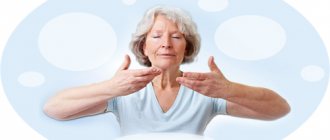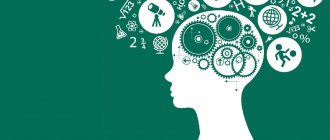Speaking about the treatment of psychotic spectrum disorders, I would like to bring to your attention the following:
- What are the medications used to treat mental and behavioral disorders?
- their effectiveness,
- the reason for prescribing a particular drug,
- who determines what drugs are needed, the importance of an individual approach in their prescription,
- side effects that may occur while taking psychotropic therapy.
Reasons for the development of the disease
The vast majority of mental disorders are polyetiological diseases, in other words, it is not always possible to identify one specific cause of the pathology. The exception is mental disorders caused by organic brain damage due to:
- traumatic brain injuries;
- complications after neuroinfections, stroke;
- tumors, vascular neoplasms;
- operations;
- congenital pathologies of the development of the central nervous system;
- long-term abuse of alcohol and drugs;
- tissue damage due to acute hypoxia.
In such cases, treatment of mental disorders comes down to restoring brain function (as far as possible).
Diseases caused by a combination of genetic and external factors are much more difficult to treat. According to experts, a person with a certain character and lifestyle is predisposed to mental disorders. The risk group includes closed, unsociable people (lately communication in society has often replaced the Internet and social networks, which psychiatrists consider even more dangerous), impressionable individuals (often they themselves search for specific content - films, stories about terrorist attacks, murders, disasters etc.).
Symptoms of a mental disorder usually manifest after very severe nervous shock. This could be some kind of misfortune, serious illness, divorce, dismissal, conflict, moving to another country. Sometimes the development of the disease occurs gradually under the influence of chronic fatigue, insomnia, and overwork.
Pyrotherapy
At one time, the use of pyrotherapy was recommended for the treatment of resistant variants of schizophrenia and the presence of psychopathic symptoms. T.A. Nevzorov and L.G. Ursova (1972) in resistant cases of sluggish schizophrenia advised adding pyrotherapy to psychopharmacological agents. The effectiveness of adding pyrogenal and sulfozine to neuroleptics, especially in the treatment of obsessive states, was justified by a change in the level of reactivity of the patient’s body under the influence of drugs that increase temperature.
COST OF TREATMENT FOR MENTAL DISEASES
The duration of treatment in a hospital is from 14 to 90 days, depending on the severity of the disease.
TREATMENT IN A HOSPITAL.
AMBULATORY TREATMENT
TREATMENT IN A HOSPITAL
Inpatient treatment – accommodation options
| Accommodation in a triple room | 10,000 rub./day |
| Double room | RUB 13,800/day |
| Single room of increased comfort | 16,000 rub./day |
| Treatment in a single VIP ward | 25,000 rub./day |
AMBULATORY TREATMENT
Ambulatory treatment
| psychiatrist | FOR FREE |
| Consultation with a psychiatrist (first appointment) – free of charge during hospitalization | 3,000 rub. |
| Full psychodiagnostics (all tests and procedures) | from 5,000 rub. |
| Appointment with the head physician of the clinic | 4,500 rub. |
| Consultation with a psychiatrist at home | from 4,000 rub. |
FREE CONSULTATION
Consultation and assistance to relatives
Relatives of patients who need support can seek help from psychotherapists at our clinic. A consultation with a doctor will help you cope with your worries and understand the true reasons for your loved one’s unusual behavior. In addition, understanding and support from loved ones play a key role in stabilizing the psycho-emotional state of patients with mental disorders.
Consultation with a doctor will help relatives:
- notice the first signs of exacerbation of the disease;
- provide timely assistance and prevent hospitalization;
- understand the nature of mental disorder.
Often, precisely because of ignorance about the peculiarities of the course of mental illness and behavior with patients during remission, relatives experience stress and tension. As a result, anger, pain and confusion interfere with the process of recovery (stabilization), resocialization and return to normal life.
Methods of drug treatment of mental disorders
Several main groups of drugs are used for therapy.
Antipsychotics (neuroleptics)
These medications can reduce the severity of:
- psychomotor agitation;
- emotional stress;
- disorganization of higher nervous activity;
- severity of hallucinations, delusions and other deceptions of perception.
A stable effect from the use of antipsychotics develops gradually, on average within 4–6 weeks. The patient's compliance with the doctor's recommendations is very important. If in a hospital we provide round-the-clock monitoring, in outpatient treatment of disorders either the patient himself or his relatives must monitor the regimen. In the absence of the expected therapeutic effect or deterioration in health after discharge, an analysis is performed to determine the content of the active substance of the prescribed drug in the blood.
Antipsychotics used in psychiatry are divided into two classes:
- Typical . They have a more pronounced effect, “work” faster, but more often cause severe adverse reactions (parkinsonism, dystonia, tremor, myoclonus, convulsions).
- Atypical . The result appears a little later, but doctors prefer neuroleptics from this particular group, since unwanted reactions occur much less frequently. In addition, due to their prolonged action, they can be drunk 1-2 times a day.
Doctors at the Cordia Clinic adhere to the following principles for the use of antipsychotics:
- compulsory course of treatment, occasional use is inappropriate;
- individual dose selection, prescribing too high or, conversely, low dosage can lead to complications;
- The simultaneous use of several antipsychotics is resorted to only when monotherapy has been proven ineffective.
Antidepressants (thymoleptics)
Prescribed for the treatment of disorders associated with depression and anxiety, regularly recurring panic attacks. In a sick person, antidepressants improve mood, reduce the level of fear and anxiety, but in a healthy person they practically do not cause any effects except for lethargy and drowsiness.
In practice, we use the latest generation of thymoleptics, which selectively act only on neuroreceptors and neurotransmitters involved in the development of depression. Antidepressants are selected strictly individually and prescribed for a long period (at least six months). In addition, the patient is warned that he will feel the effect of such treatment for the disorder no earlier than after 2-3 weeks.
Tranquilizers
Usually used to relieve acute agitation and normalize the process of falling asleep. The drugs are widely used for almost all mental disorders. Prescribed for a short period of time (on average up to 4 weeks, in severe cases - up to 3 months) due to the risk of developing addiction. The pharmacotherapeutic effect develops very quickly - within several hours.
PsyAndNeuro.ru
The material was prepared with the support of the Doctor SAN Psychiatry Clinic (St. Petersburg)
Higher mortality due to cardiovascular disease is observed in schizophrenia due to the disorder itself and the use of antipsychotics. South Asians are more vulnerable to developing metabolic disorders than others. Topiramate may be useful for weight loss and psychopathology in schizophrenia. However, only one randomized controlled trial (RCT) has been conducted in South Asia, which is home to a quarter of the world's population.
A double-blind RCT compared topiramate 100 mg/day with placebo in overweight/obese adults with schizophrenia who had been taking antipsychotics for at least a year.
The study was completed by 50 patients each in the topiramate and placebo groups. Topiramate adjunctive therapy resulted in significant reductions in body weight/body mass index and improvements in symptoms measured by BPRS compared with placebo. There were significantly more reports of decreased appetite in the topiramate group.
Source
Statins are widely used as first-line agents for the prevention of lipid-related cardiovascular disease. These drugs have both anti-inflammatory and antioxidant properties, which may also be useful in the treatment of neuropsychiatric disorders.
A narrative review examined the effects of statin therapy in people with major depressive disorder (MDD), schizophrenia, anxiety, obsessive-compulsive disorder (OCD), bipolar disorder (BD), delirium and autism spectrum disorders. Lipophilic statins (including simvastatin), due to better brain permeability, may have a greater protective effect in MDD and schizophrenia. The significant beneficial effects of statins in the treatment of anxiety disorders without serious side effects have been shown in numerous studies. In OCD, bipolar disorder, and delirium, limitations and inconsistencies in the available data make it difficult to draw conclusions about the beneficial effects of statins. The beneficial effects of simvastatin in autism have only been assessed in a small number of clinical trials.
Figure 1 – Effects of statins in neuropsychiatric disorders
Source
The systematic review included 23 studies of folic acid supplementation for various mental disorders. Of these, 9 studies examined the effectiveness of folic acid supplementation for depressive disorders, 5 studies for schizophrenia, 6 studies for autism spectrum disorder, 2 studies for bipolar affective disorder, and 1 study for ADHD. The most notable association of oral levomefolic acid or 5-methylfolate was with improved clinical outcomes in the psychiatric disorders mentioned earlier, especially major depressive disorder (including postpartum and postmenopausal depression), schizophrenia, autism spectrum disorder, ADHD, and bipolar affective disorder. Folic acid supplementation was well tolerated.
Source
Patients with bipolar disorder have higher rates of cardiometabolic comorbidity and mortality. Although guidelines emphasize the importance of monitoring cardiovascular parameters, few studies have characterized the cardiometabolic risk profile during treatment and its association with symptoms and response to treatment.
Data from two similar 24-week comparative effectiveness trials with a pooled sample of 770 participants were analyzed. Higher levels of cholesterol and LDL were associated with greater severity of depression, showing differential correlations with specific symptoms, particularly agitation, decreased energy, and suicidality. Patients randomized to receive quetiapine (300 mg/day) showed significant worsening of cardiometabolic markers during the 24-week trial. Neither baseline nor change in lipid levels correlated with differential treatment response.
Source
It may take several weeks of antidepressant treatment before effectiveness is demonstrated in patients with major depressive disorder. A post hoc analysis examined the predictive value of early partial improvement with vortioxetine as a marker of treatment response and remission.
Data showed that respondents with early improvements who received vortioxetine (10 mg or 20 mg) were more likely than respondents without early improvements to achieve response at week 8 (71.2-73.2% vs 29.7-38 .0%) or remission (50.7-51.5% versus 17.4-18.7%). Positive predictive values for response and remission with vortioxetine were approximately 70% and 50%, respectively; the negative predictive value was about 70% and 80%, respectively.
Some patients may benefit from longer treatment even without initial improvement, which may aid in clinical decision making.
Source
Cognitive Lewy body disorders occur in two forms: dementia with Lewy bodies (DLB) and parkinsonian dementia (PD), which follows the development of Parkinson's disease. There is currently no effective treatment for these cognitive disorders with Lewy bodies. Therapeutic trials for DLB are rare due to the fact that the disease was only recently described and the first international diagnostic criteria were published relatively recently (1996).
The systematic review identified 35 therapeutic trials on ClinicalTrials.gov and 14 on PubMed. 21 trials were analyzed. Of the 11 completed open-label trials, two drugs showed positive results: two trials with zonisamide (Phase 2 and 3) showed improvement in parkinsonian syndrome, and one trial with neflamapimod (Phase 2) showed improvement in cognition and walking.
Source
Experimental studies and small clinical trials have shown that intranasal administration of oxytocin can reduce social impairment in people with autism spectrum disorder. Oxytocin has been used in clinical practice for many children with autism spectrum disorders.
A placebo-controlled phase 2 trial of intranasal oxytocin therapy in children and adolescents with autism spectrum disorder for 24 weeks showed no significant between-group differences in least squares mean change from baseline in social and cognitive functioning.
Source
The review authors sought to examine the effects of physical activity on cognitive function and deficits in healthy populations and other needy groups. The relationship between healthy habits and psychopathological risks was also examined. And assessed the impact of the COVID-19 pandemic on exercise addiction and possible related disorders.
The results showed multiple effects, such as better accuracy and response speed in information processing tasks for healthy populations; improving executive function, cognitive flexibility, and academic performance in children; improving attention and executive functions and reducing hyperactivity and impulsivity in children with attention deficit hyperactivity disorder (ADHD); improvement of executive and global functions in adults; improving overall cognitive functioning in patients with schizophrenia spectrum disorder or bipolar disorder. The data also showed that exercise addiction appears to be associated with low levels of education, low self-esteem, eating disorders and body dysmorphism. People with more debilitating personality traits and intolerance of uncertainty show a strong link between COVID-19-related anxiety, compulsive exercise and eating disorders.
Source
The material was prepared with the support of the Doctor SAN Psychiatry Clinic (St. Petersburg)
Author of the translation: Cherapkin E.S.
Compiled by: Kasyanov E.D.
Main directions of psychotherapy
Depending on the clinical picture and cause of mental disorders, doctors at our medical center practice the following psychotherapy techniques:
- dynamic, aimed at resolving conflicts, identifying unconscious drives;
- cognitive-behavioral, necessary for social adaptation, pathological characteristics of the patient’s behavior, identifying negative attitudes and overcoming them with the help of auto-training and relaxation;
- existential-humanistic, the purpose of which is to search for the meaning of life, problems of freedom of choice and dependence on the opinions of other people;
- art therapy, when the patient’s internal experiences are expressed non-verbally (using a drawing or any other creative product);
- suggestive treatment (various methods of hypnosis), used for addiction to alcohol, drugs, nicotine, etc., encopresis, enuresis and some other diseases.
In addition to psychotherapy and drug treatment of mental disorders, medical doctors use a variety of physical procedures and methods of hardware influence on biologically active points. Correction of the daily routine and diet is important, physical activity is beneficial. But the main principle of therapy is an individual approach to each patient.
To make an appointment or call a doctor at home, call us at +7 (495) 367-23-13.
Detoxification therapy
The problem of detoxification in schizophrenia was dealt with by V.V. Protopopov and his students. In order to “break through the nitrogen blockade, increase the release of nitrogenous wastes and establish protein balance, increase enzymatic and, especially, oxidative processes” in schizophrenia V.V. Protopopov recommended the use of sulfur preparations. Considering the fact that on the days of sulfur injection, blood sugar dropped due to the insulin-like effect of sulfur, V.P. Protopopov advised administering glucose to patients.
A.L. Leshchinsky and F.I. Brodsky (1947) at one time tried to analyze the mechanisms of the therapeutic effect of sulfur in schizophrenia. The authors recommended prescribing cystine to patients with schizophrenia, with injections of which there was no systematic rise in temperature, as with the administration of sulfozine.
F.F. Detenhof (1957) used various sulfosin therapy regimens: for acutely onset forms of schizophrenia with speech motor excitation - decreasing doses from 10-8 to 3-2 ml of 1% suspension; in procedural forms with delusions and hallucinations - increasing doses from 2-3 ml, in rare cases up to 6-7 ml; for sluggish, protracted forms, long-term daily administration of 0.1% suspension.
In the 50s of the twentieth century, attempts were made to treat schizophrenia. Patients were tried to receive blood transfusions once or two or three times with weekly breaks. They tried to transfuse blood of a different group in small quantities in order to cause “hemoclatic shock”, after the onset of which it was quickly stopped with infusions of saline or calcium chloride. For schizophrenia, hemoplacental therapy and autohemotherapy were also recommended, the latter was carried out twice a week, taking 3-5 ml of blood from a vein and then injecting it subcutaneously into the subscapular region. An option for autohemotherapy was the introduction of so-called “little blood”, which was obtained by supplementing distilled water with an equal (2.5 ml) amount of blood from a patient with schizophrenia.
By prescribing detoxification therapy, for example, by administering hyposulfite, it was possible to mitigate not only somatic, but also psychopathological symptoms of schizophrenia (Nevzorova T.A., Kokanbaeva R.F., 1962). In a number of cases of treatment of schizophrenia, the positive role of hemosorption therapy was noted, which, unfortunately, was distinguished by a short-term effect (Lopukhin Yu.M. et al., 1980). Researchers of detoxification therapy for schizophrenia wrote about the pathochemical factor in schizophrenia, which included: the exchange of catecholamines and their metabolites, unclear autotoxins, antibodies to drugs, autoimmune complexes to various tissues of the body and other factors causing chronic intoxication. All these harmful toxins were sought to be removed from the body of a patient with schizophrenia with the help of hemosorbents (Morkovkin V.M., Kartelishev A.V., 1988).
Clinical picture of psychosomatic diseases
Psychosomatosis is also observed in completely healthy people. A striking example: an acute reaction of the body to stress (for example, frequent urination or bowel movements during severe anxiety). If such symptoms are isolated, there is no reason to worry. However, if they recur regularly, it is necessary to consult a specialist and subsequently begin treatment, as this may indicate the progression of a psychosomatic disease.
“Classical” psychosomatosis includes pathologies in the clinical picture of which there are organic lesions of any internal organs and systems. Often people are seen by therapists and cardiologists for years, but the prescribed medications either do not help or bring only short-term relief, since an individual approach is always required in the selection of methods for treating psychosomatic diseases.
Description of individual syndromes
The most common psychosomatosis in adults is peptic ulcer disease. Patients with a similar diagnosis are characterized by:
- increased excitability;
- anxiety;
- suspiciousness;
- scrupulousness and pedantry.
Chronic stress is accompanied by functional disorders of the secretory activity of the digestive tract, which, in turn, causes an inflammatory response.
Nonspecific ulcerative colitis occurs more often in women. Such a psychosomatic illness is typical for outwardly calm and balanced people. But under the guise of complacency they often hide self-centeredness, stubbornness, feelings of guilt, extreme resentment and hostility.
The cause of the development of coronary heart disease in adults is also considered to be personality traits (often called “coronary behavior”), in particular, impatience, touchiness, which is combined with aggressiveness, independence, ambition, and the desire to “save face” in any situation.
The role of psychogenic factors and emotional stress in the development of psychosomatic skin diseases is well known. In such cases, the underlying cause is dysfunction of the autonomic nervous system. Epidermal psychosomatosis is characterized by:
- severe pallor or redness of the skin (including local hyperemia);
- local hyperhidrosis;
- skin itching;
- recurrent urticaria;
- psoriasis;
- neurodermatitis;
- eczema.
Premature skin aging caused by vascular trophic disorders is also typical for cutaneous psychosomatosis in adults. Such changes in the skin are usually accompanied by hair loss, bleaching, and progressive destruction of the nail plate.
Psychosomatic diseases: causes
In the vast majority of cases, the pathology develops unnoticed. It usually starts with:
- feelings of anxiety;
- increased anxiety;
- sleep disorders;
- feelings of general weakness, weakness, malaise;
- unpleasant, bad feelings;
- general emotional discomfort;
- depression, gloominess, lack of vitality.
Such symptoms indicate neurasthenia or neurosis. In the absence of proper treatment, a person’s psycho-emotional state worsens, which leads to the development of depression and panic attacks.
The exact pathogenetic cause of psychosomatosis has not been definitively established. It is assumed that organic pathology may be associated with impaired production of neurotransmitters and changes in the functional activity of neuroreceptors. This entails a variety of circulatory disorders, a decrease in immune defense, and “triggers” autoimmune reactions.
Medicines - only when necessary
Using pharmacotherapy as a sometimes necessary part of treatment, we give preference to non-drug methods of treatment. In addition to psychotherapy, these are methods unique to Russia:
- biofeedback;
- phototherapy;
- laser therapy, etc.
In addition, we teach patients how to use therapeutic computer programs, which later, at home, will help them relieve anxiety, tension, fears, and also prevent panic attacks.
The cause of disorders is stress
People react to stress differently. Someone, constantly relieving tension with a glass of wine, ends up in alcoholism, others develop psychoses and neuroses, others become victims of appetite disorders in the form of anorexia or bulimia.
Such mental illnesses, as well as disorders such as panic attacks, obsessive fears and phobias, respond well to psychiatric treatment if it is carried out at the proper level.
At the Mental Health Clinic, we not only treat patients, bringing their condition to a significant improvement, but, in most cases, achieve a complete cure.
Mental disorders in adults
Most mental health problems in adults arise and develop against the general background of dissatisfaction with life, as well as particular stressful situations that can be accompanied both in the family and at work.
Bipolar disorder has gained widespread popularity because the number of patients it reaches is frightening. The disease manifests itself through frequent uneven mood swings, when a person, from vigorous activity, is transferred to a period of complete powerlessness, with the inability to eat, move and continue a full life.
Another most common mental disorder in adults is depression. Despite the fact that psychologists have long been trumpeting the danger of this disease, modern society still does not pay due attention to it and subsequently specialists have to treat more advanced forms that the person himself is not able to cope with.
Schizophrenia. May arise from dissociative identity disorder or as a separate disorder. As a rule, the disease develops against a background of disharmony and a tense nervous state over a long period of time, but schizophrenia can also develop on a completely stable neurological basis.
Women, as a separate category, are more susceptible to mental disorders than men. The most common diseases include manic-depressive psychosis, eating and sexual behavior disorders, delirium and alcohol addiction, nervousness and panic attacks.
Treatment in a country hospital
There are times when effective mental health treatment is impossible without isolation from the everyday environment and round-the-clock supervision of qualified specialists.
It is for such cases that the Mental Health Clinic has its own hospital, located in the Moscow region on the territory of a sanatorium, where, in addition to professional care and quality service throughout the course of treatment, patients enjoy beautiful scenery and high-quality natural food.
With this treatment, even the most severe forms of mental illness can be forgotten for a long time, and often forever.
Do you need a consultation? Still have questions? Call us
Brain stimulation as a method of treating mental disorders
The method of brain stimulation is a modern way of treating mental illnesses in cases of low effectiveness of medication and psychotherapeutic effects. This method is a complex of procedures such as ECT (electroconvulsive therapy),
TMS (impact on the cerebral cortex with short magnetic pulses), etc.
TREATMENT IN A HOSPITAL
Hospitalization in inpatient medical institutions is necessary for acute forms of the disease:
- the patient is unable to care for himself;
- there is a threat to the safety of life and health of the patient and the people around him;
- the patient cannot cope with his condition; it is painful and unbearable for him.
HOW TO AVOID RECURRENCE: REHABILITATION AND PREVENTIVE MEASURES
Rehabilitation appointments are mandatory, as they are aimed at adapting the patient to the existing reality and its circumstances, developing his communication skills, the ability to cope with simulated situations and the difficulties of real life.
Completing the full treatment program and following the recommendations of medical specialists is a condition for cure and eliminates relapses of mental disorders.
Signs of mental disorder
The peculiarity of mental illness is that there are no conditions, ages, nationalities or races for them. Absolutely every person, especially in the current world of multitasking and constant stress, is susceptible to threat. You can recognize the signs of a mental disorder with some careful observation of the behavior of others and your own.
- No matter how crazy you go. Everyone has fear - of newness, forgetfulness, a pressing deadline, natural disasters and other similar things. Constant thoughts around what a person is afraid of, together with a series of nervous situations at home or at work, can cause neurosis and panic attacks. And when mental health is shaky, psychosomatics can also get involved. In such a set it is difficult to find the root cause, and the neglected process can result in a more serious mental illness.
- Absent-mindedness. Conditions of constantly tight deadlines have a strong impact on the nervous system. It’s simply physically impossible to do everything, and you become distracted and forgetful. The nervous system cannot cope with overstrain and fails. As a result, the development of a mental disorder.
- Not good enough. Beauty standards, fashion canons, and high standards lead to the emergence of a whole complex of mental illnesses. This includes depression, eating disorders and psychosis. N
- Addiction. In addition to addiction to various alcoholic and psychotropic substances, which cause many mental disorders, psychologists have found that workaholism can also lead to unwanted diseases. Constant immersion in work matters, sleep disturbances and emotional burnout are slowly and surely preparing another person who needs the help of a psychotherapist.
Treatment of mental disorders in children
Most mental disorders in children are caused by adolescence and the stage of personality development. If symptoms indicating the development of deviations are detected, it is necessary to stabilize the atmosphere in the family as much as possible, spend more time with the child, talk about topics that concern him and support him in the first uncertain steps without criticism and intimidation. A visit to a psychologist and obtaining an expert point of view will also not be superfluous and will help you correctly plan the process of dealing with an unwanted illness.
Some diseases, such as schizophrenia, which appear already in adolescence, require mandatory drug intervention. However, many other disorders do not require the addition of medications to the treatment of mental disorders in children, therefore, the creation of harmonious relationships with oneself and society should be taken into the hands of parents or psychological professionals.
Psychotherapeutic assistance
An essential component of treatment is psychological counseling. Regular meetings with a psychologist are aimed at helping the patient understand his illness and its causes, learn to get out of stressful conditions, overcome emotional problems, manage his thoughts and actions, and control behavior.
A course of psychotherapy usually lasts several months or more, and is prescribed individually, in a group of patients or relatives.










